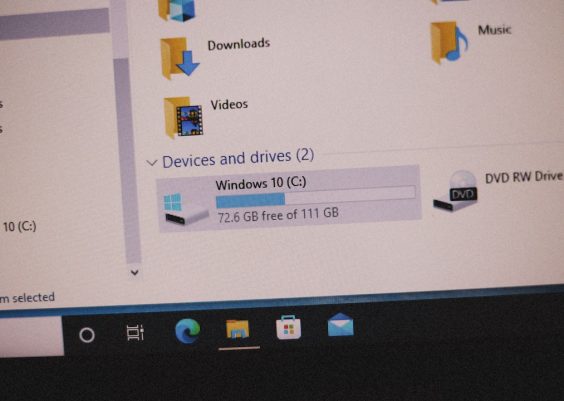In recent years, E Ink technology has found its way into more than just e-readers. Traditional LCD and OLED screens have long dominated the computing world, but now a new hybrid category is emerging: Chromebook E Ink tablets. These devices combine the versatility of ChromeOS with the low-power usability of E Ink, promising longer battery life and a more eye-friendly reading and writing experience. But are they actually any good?
To answer this question, we must examine their hardware capabilities, software functionality, use-case performance, and how they stack up against more traditional computing options.
Contents
What is an E Ink Chromebook Tablet?
An E Ink Chromebook is essentially a ChromeOS-powered tablet that uses an E Ink display instead of a conventional screen. E Ink displays mimic the appearance of ink on paper and consume far less power. They are primarily monochrome, extremely readable under bright light, and are usually seen in devices like the Kindle or reMarkable tablets.
By integrating ChromeOS, Google’s lightweight and cloud-focused operating system, these hybrid devices aim to provide a middle ground between a conventional tablet/laptop and an e-note-taking device.

Advantages of Chromebook E Ink Tablets
There are several compelling reasons to consider these devices:
- Battery Life: E Ink screens consume significantly less power, leading to battery life measured in days rather than hours.
- Eye Comfort: Because there’s no backlight and a much slower refresh rate, using an E Ink display over extended periods results in much less eye strain. This is particularly valuable for writers, researchers, and readers.
- Focus: ChromeOS is already quite minimalist, and the deliberate limitations of an E Ink interface promote distraction-free work. No flashy notifications or slick transitions — just text, tools, and clarity.
- Stylus and Note-Taking: Many E Ink Chromebooks come with stylus support, turning them into powerful note-taking devices for students and professionals.
Current Offerings and Hardware Specifications
As of 2024, the number of Chromebook E Ink tablets on the market is still limited, but pioneering models such as the Lenovo ThinkBook Plus Gen 3 or the Onyx Boox NoteAir C with a ChromeOS wrapper are exploring this hybrid space.
These devices generally feature:
- E Ink Carta or Kaleido Displays: Ranging from 10.3 to 13.3 inches, some even offer color E Ink technology.
- Stylus Support: With EMR (Electromagnetic Resonance) or AES pens for latency-free writing.
- ChromeOS Integration: This includes access to Android apps via the Play Store, Google Docs, Sheets, and full Google account integration.
- Universal USB-C Charging: A standard feature facilitating easy charging and peripheral accessories.
However, users must keep in mind that E Ink screens are not meant for high-speed motion rendering. Expect slow refresh rates, grayscale limitations, and ghosting artifacts during navigation, all of which contrast with standard Chromebook experiences.
Software Experience
Running ChromeOS on E Ink comes with both advantages and serious trade-offs. On one hand, many Google services such as Docs, Keep, and Gmail benefit from the distraction-free interface. On the other hand, app compatibility can be a concern. Android apps built for LCD screens often break or become unresponsive on E Ink displays.
Furthermore, browsing is not ideal. E Ink is poorly suited to dynamic web content, animations, or scrolling-heavy pages. Some systems attempt to mitigate this with “partial refresh” and “speed mode” features, but the results are mixed.
That being said, document editing, reading, and note-taking apps like:
- Google Docs
- Evernote
- Simplenote
- Adobe Acrobat Reader
work reasonably well. Some advanced E Ink tablets also allow split-screening, helpful for reference-based work or language learning. However, multimedia functions, including video playback and interactive whiteboarding, are essentially out of scope.

Target Audience
Chromebook E Ink tablets are not meant to replace your primary computer. Instead, they shine in niche applications tailored to their strengths:
- Writers and Journalists: With less visual clutter and fewer notifications, it becomes easier to focus on long-form writing or editing tasks.
- Students: Ideal for note-taking in lectures, reading course materials, and minimal distractions.
- Researchers and Editors: For those who deal with reading and annotating heaps of PDFs, these devices offer an incredibly functional solution.
- Remote Professionals: Those who travel frequently and require a lightweight, eye-friendly screen will benefit from the long battery life and portability.
However, gamers, designers, and users who rely on high-speed, high-color-demand workflows will find these devices frustrating.
Comparisons with Other Devices
When comparing E Ink Chromebooks to devices in similar spaces, a few clear differences emerge:
| Device Category | Pros | Cons |
|---|---|---|
| E Ink Chromebook Tablet | Excellent battery life, eye-friendly, writing-focused, ChromeOS integration | Slow refresh, limited multimedia, costly for limited use cases |
| Regular Chromebook | Fast processing, full color, multimedia-friendly, versatile | Shorter battery life, more distractions, less ideal for reading |
| Kindle Scribe / reMarkable | Top-tier note-taking, affordable, great handwriting feel | Limited functionality, not a full OS, minimal app support |
Where They Fall Short
Being honest, E Ink on ChromeOS is a work in progress. Inconsistent app performance, slow UI rendering, and sluggish page loads hamper what would otherwise be a revolutionary device category. Despite growing interest, manufacturers must refine the user experience to make E Ink Chromebooks more broadly appealing.
Price is also a concern. These hybrids often cost between $400 and $900 — a range where users might expect full-function laptops or powerful tablets with OLED displays. The narrow use case will make mainstream adoption difficult unless prices become more competitive or performance improves significantly.
Privacy and Security
Like other Chromebooks, E Ink editions benefit from Google’s robust security stack. Verified boot, sandboxing, and automatic updates ensure minimal attack vectors. Importantly, these devices are cloud-first — meaning heavier reliance on internet connectivity, although offline support exists for core productivity apps.
This makes them attractive for professionals working in journalism, legal, and education sectors who prioritize device security but also need a focused tool for reading and writing sensitive materials.
Conclusion: Are They Any Good?
Yes — but only for the right user. Chromebook E Ink tablets represent an ultra-specialized slice of the tech market. For people who spend their days reading, writing, and annotating, they offer a refreshing retreat from the noise of highly digitized environments. But for most users, the trade-offs in speed, compatibility, and price may be too steep.
If manufacturers can resolve usability concerns and lower cost, the future could see a significant rise in adoption. For now, however, these devices remain niche, fascinating, and surprisingly effective when used for their intended purpose.




